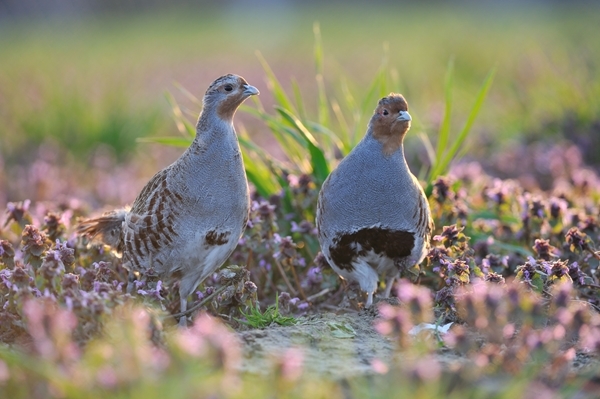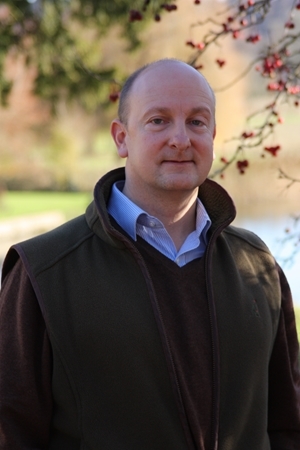
THE Game & Wildlife Conservation Trust (GWCT) is warning shoots to be ultra-cautious about shooting wild grey partridges this season.
Autumn count data gathered by GWCT and members of the Partridge Count Scheme (PCS) indicate it has been a poor breeding season for the popular gamebird.
Even on areas that are managed for grey partridges (those that ensure abundant habitat for nesting and brood-rearing as well as seasonal predator control), the number of chicks produced is below average.
On areas of the country without management for grey partridges, the situation will be worse. It is likely that the low number of young is related to a lack of chick-food insects, in combination with intense rainfall and cold temperatures in June. This is a serious situation that, while not as bad as the devastating summer of 2012, needs everyone interested in grey partridge conservation to bear in mind.
Dr Julie Ewald, a senior scientist with the GWCT, said: “In order to shoot sustainably, it is important to know what numbers of birds you have on the ground.”
“Many coveys seen this year have few young and are being joined by barren pairs or single adult birds, making the covey size appear closer to normal. Make sure you spend time identifying both young and old in a covey, to ensure you don’t overestimate the number of chicks produced.”
It is important that Guns familiarise themselves with the “Six Golden Rules”, devised by the GWCT to aid grey partridge conservation (gwct.org.uk/6-golden-rules).
The most important of these is not to shoot grey partridges unless you are actively taking steps to conserve them, including counting them.
Furthermore, GWCT advises not to shoot grey partridges if you have fewer than 20 birds per 250 acres in the autumn and that you stop shooting if the density falls below the 20 birds per 250 acres threshold. The other rules cover timing of shooting and avoiding accidentally shooting grey partridges when targeting driven, released red-legged partridges.
The GWCT advisory team supports 12 regional partridge groups, providing a focus on the grey partridge and helping land managers find practical solutions for their recovery.
 Dr Roger Draycott, head of advisory services at GWCT who is pictured right, said: “While it has been a disappointing year for grey partridge breeding success, given the right conditions, numbers can bounce back quickly so a cautious approach to grey partridge shooting this autumn will benefit greys in the long-run.”
Dr Roger Draycott, head of advisory services at GWCT who is pictured right, said: “While it has been a disappointing year for grey partridge breeding success, given the right conditions, numbers can bounce back quickly so a cautious approach to grey partridge shooting this autumn will benefit greys in the long-run.”
To protect the existing partridge population this winter, the GWCT has some helpful advice for shoots:
Farmers and land managers can give wild partridges extra food this winter and next spring to make sure they start the next breeding season in the best possible condition.
Farmers should provide plenty of cover at the edges of fields for birds to hide in during the late winter and early spring as they can suffer losses of over 50 per cent when cover is in short supply.
Landowners and managers should operate legal predator control during the breeding season because grey partridges are ground-nesting birds and are vulnerable to a range of common predators.
Attend a GWCT regional partridge group event. These groups offer talks and farm walks, providing updates on partridge counts, our wider partridge research and face-to-face advice on how to manage land effectively to encourage wild partridges.
The GWCT encourages anyone with wild grey partridges on their land to join the PCS. While collecting important data for the GWCT, the scheme aims to help land managers make informed decisions on habitat management provision that benefit grey partridges and other wildlife.
Dr Ewald added: “We must act now, and with the support of those who love the grey partridge, this will be a temporary setback.
“Farmers and gamekeepers are key to the recovery of this iconic and once common gamebird.”
To find out more information and sign up to the PCS please visit gwct.org.uk/partridge
Further information on how to manage farmland for grey partridge conservation can be found here: www.gwct.org.uk/PCSdownloads.
Notes to editors
The Game & Wildlife Conservation Trust – providing research-led conservation for a thriving countryside. The GWCT is an independent wildlife conservation charity which has carried out scientific research into Britain’s game and wildlife since the 1930s. We advise farmers and landowners on improving wildlife habitats. We employ more than 60 post-doctoral scientists and other research staff with expertise in areas such as birds, insects, mammals, farming, fish and statistics. We undertake our own research as well as projects funded by contract and grant-aid from government and private bodies.
For information, contact:
Eleanor Williams
Telephone: 07592 025476
Email: press@gwct.org.uk